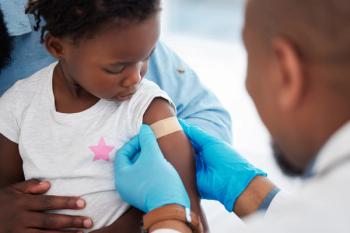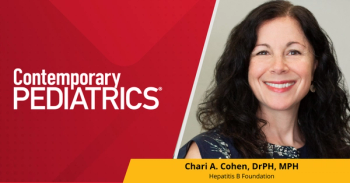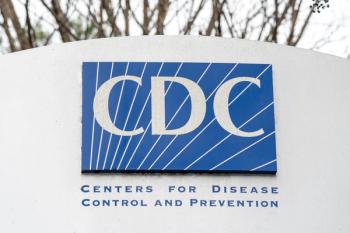
Caffeine proposed as a potential tool in reducing risk of SIDS
Caffeine may protect infants from SIDS by reducing oxygen drops, offering a potential new tool alongside safe sleep practices, a recent study suggests.
Researchers at Rutgers Health have proposed a new approach to addressing Sudden Unexpected Infant Death (SUID)—caffeine. In a hypothesis published in the Journal of Perinatology, they suggest caffeine may offer protection by stabilizing infant breathing and preventing intermittent drops in oxygen, a condition known as intermittent hypoxia, which they identify as a common thread in known SUID risk factors.1,2
SUID remains a significant public health concern in the United States, accounting for about 3,500 infant deaths annually—a rate that has remained largely unchanged since the mid-1990s. Despite initial reductions following public health campaigns encouraging supine sleeping and safe sleep environments, Sudden Infant Death Syndrome (SIDS) continues to be the leading cause of death among infants aged 1 to 12 months.
“We've been concerned about why the rates haven't changed,” said Thomas Hegyi, MD, a neonatologist at Rutgers Robert Wood Johnson Medical School and lead author of the paper. “So, we wanted to explore new ways of approaching the challenge.”
Hegyi and co-author Barbara Ostfeld, PhD, noted that most known SIDS risk factors—such as prone sleeping, maternal smoking, bed-sharing, and preterm birth—share a connection to intermittent hypoxia, where an infant's oxygen saturation falls below 80% for at least five seconds. These events may impair autonomic regulation, blunt arousal from sleep, and lead to a cascade of cardiorespiratory decline.
“I wondered, what can counter intermittent hypoxia?” Hegyi said. “Caffeine.”
Caffeine is already in use clinically as a respiratory stimulant for premature infants experiencing apnea. It improves respiratory stability and arousal response and has shown positive effects on neurological outcomes. According to the researchers, “caffeine administration has been shown to preserve white matter development and myelination while improving neurological outcomes in premature human infants and neonatal rats exposed to chronic hypoxia.”
What makes caffeine particularly relevant for this hypothesis is its metabolism in newborns. While adults metabolize caffeine in about four hours, infants can retain it for up to 100 hours. This prolonged presence could offer protection in the early months of life, potentially explaining why SIDS peaks between two and four months of age, when infants begin metabolizing caffeine more efficiently.
The researchers also highlight the possibility that breast milk may contribute to SIDS prevention through its caffeine content. “We hypothesize that the protection afforded by breast milk is, in part, due to caffeine,” they wrote.
However, this proposal is not without complications. Prior research has suggested a link between heavy maternal caffeine intake and increased SIDS risk, but the Rutgers team posits that the elevated risk could be due to withdrawal effects after birth, rather than caffeine exposure itself. This would imply that a sudden drop in caffeine following delivery might disrupt infant respiratory control.
Ostfeld, a professor at Rutgers Robert Wood Johnson Medical School and director of the SIDS Center of New Jersey, emphasized that caffeine would not replace safe sleep practices. “The idea isn't that caffeine will replace risk-reduction behaviors,” she said. “A baby dying from accidental suffocation, one component of SUID, is not likely to have benefited from caffeine but would have from such safe sleep practices as the elimination of pillows and other loose bedding from the infant’s sleep environment.”
The team proposes future research to test their hypothesis by examining caffeine levels in infants who died of SIDS compared to those who died from other causes. If validated, caffeine could become the first pharmaceutical intervention aimed at reducing SUID risk.
“For over 30 years, we've been educating New Jersey’s parents about adopting safe infant sleep practices,” Ostfeld said. “These efforts have contributed to our state rates being the second lowest in the US. Still, for various reasons, these proven recommendations are not universally adopted. This new hypothesis offers a way not just to address important risk factors but potentially intervene.”
While the researchers stress that no changes to clinical practice are currently warranted, their work offers a new direction for a field that has seen limited progress in recent decades.
As Hegyi noted, the purpose of the hypothesis is “to stimulate new thinking about a problem that has remained unchanged for 25 years.”
References:
- Rutgers University. Why caffeine might hold the key to preventing sudden infant death syndrome. Eurekalert. June 11, 2025. Accessed June 20, 2025. https://www.eurekalert.org/news-releases/1087195
- Hegyi T, Ostfeld BM. Reducing the risk of sudden unexpected infant death: the caffeine hypothesis. Journal of Perinatology. Published online June 10, 2025. doi:https://doi.org/10.1038/s41372-025-02333-x
Newsletter
Access practical, evidence-based guidance to support better care for our youngest patients. Join our email list for the latest clinical updates.










